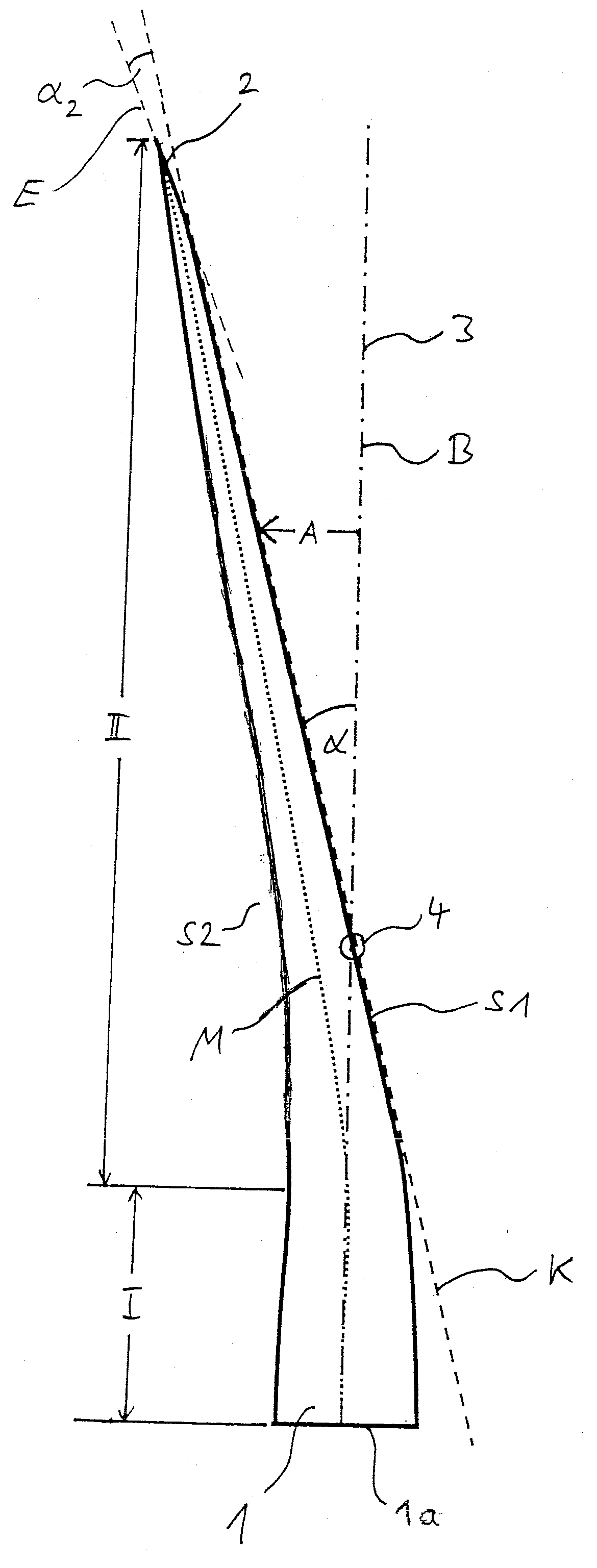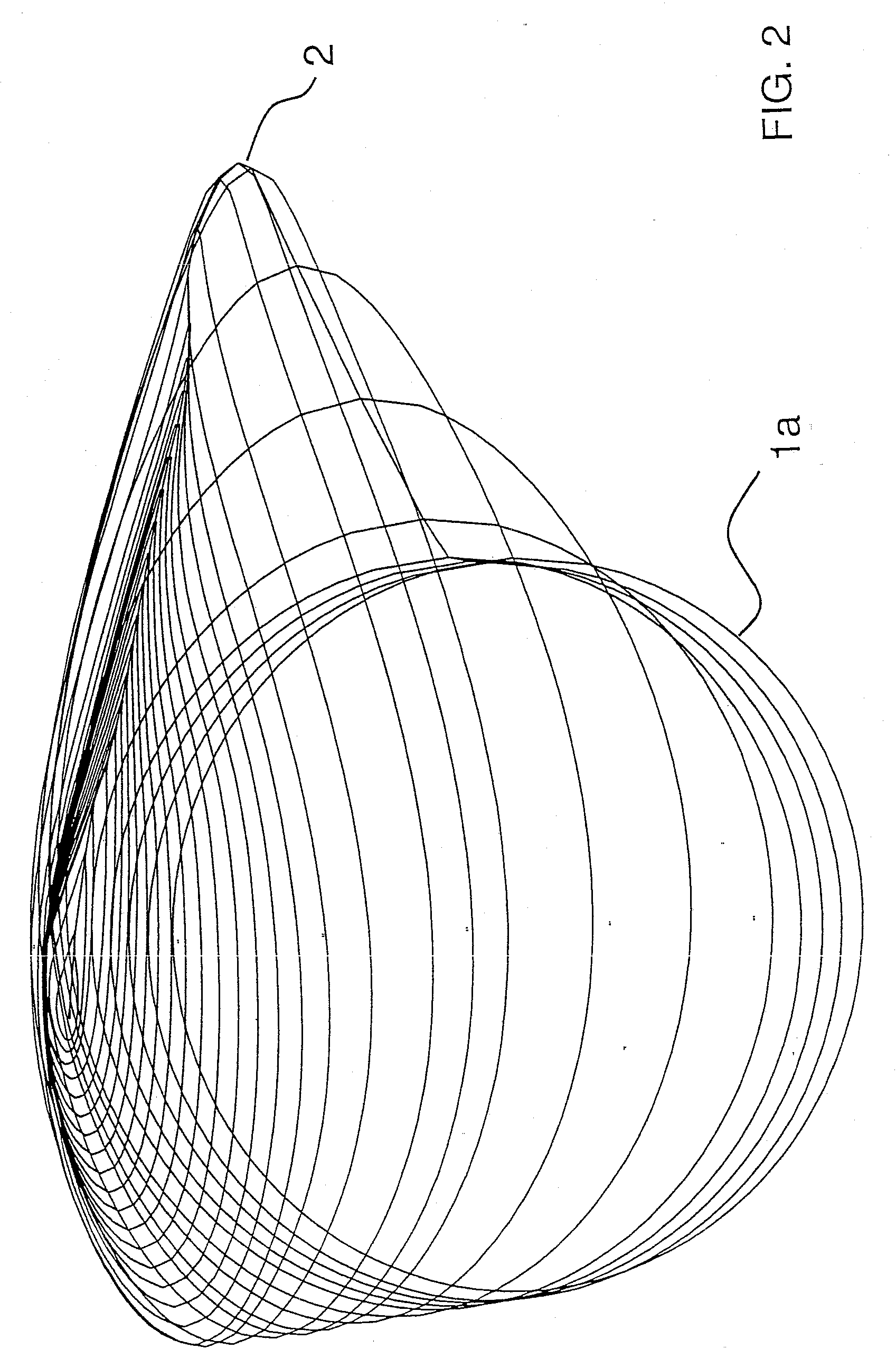Rotor blade and wind energy plant
a technology of wind energy and rotor blades, which is applied in the direction of propellers, water-acting propulsive elements, propulsive elements, etc., can solve the problems of bending of the rotor blade in the operation of the plant, the need for correspondingly elaborate dimensioning of the rotor and the plant, and the contour of the aerodynamically important suction surface of the blade, so as to increase the tower freeway further and reduce the effect of undesirous
- Summary
- Abstract
- Description
- Claims
- Application Information
AI Technical Summary
Benefits of technology
Problems solved by technology
Method used
Image
Examples
Embodiment Construction
[0033]While this invention may be embodied in many different forms, there are described in detail herein a specific preferred embodiment of the invention. This description is an exemplification of the principles of the invention and is not intended to limit the invention to the particular embodiment illustrated
[0034]In FIG. 1, a rotor blade 1 according to the present invention is depicted. The rotor blade 1 has a first longitudinal portion I starting from the blade root 1a and a second longitudinal portion II, following the first longitudinal portion I and running out into a blade tip 2. In the depicted example, the length of the first longitudinal portion I is about 20% of the overall length of the rotor blade 1, and the length of the second longitudinal portion II is about 80% of the overall length of the rotor blade 1. In this, the blade tip 2 occupies a length of about 5% of the overall length of the blade 1, and it is a part of the second longitudinal portion II.
[0035]The rotor...
PUM
 Login to View More
Login to View More Abstract
Description
Claims
Application Information
 Login to View More
Login to View More - R&D
- Intellectual Property
- Life Sciences
- Materials
- Tech Scout
- Unparalleled Data Quality
- Higher Quality Content
- 60% Fewer Hallucinations
Browse by: Latest US Patents, China's latest patents, Technical Efficacy Thesaurus, Application Domain, Technology Topic, Popular Technical Reports.
© 2025 PatSnap. All rights reserved.Legal|Privacy policy|Modern Slavery Act Transparency Statement|Sitemap|About US| Contact US: help@patsnap.com



